Candy cce 16 Handleiding
Bekijk gratis de handleiding van Candy cce 16 (16 pagina’s), behorend tot de categorie Afzuigkap. Deze gids werd als nuttig beoordeeld door 165 mensen en kreeg gemiddeld 4.4 sterren uit 83 reviews. Heb je een vraag over Candy cce 16 of wil je andere gebruikers van dit product iets vragen? Stel een vraag
Pagina 1/16

INSTRUCTIONS FOR INSTALLATION AND USE
MONTAGE- UND GEBRAUCHSANWEISUNG
INSTRUCTIONS POUR L'INSTALLATION ET L’UTILISATION
ISTRUZIONI PER L'INSTALLAZIONE E L’USO
INSTRUCCIONES PARA INSTALACIÓN Y USO
AANWIJZING VOOR GEBRUIK EN INSTALLATIE

ENGLISH
DESCRIPTION
The unit can be found in filtering hoods or in exhaust hoods. In the Filtering hoods (Fig. 1) the air and steam
taken up by the unit are purified with charcoal filters and returned to the environment through the aeration grids on
the side of the flue. WARNING: When using filtering hoods, both charcoal filters and an air deflector (A) must be
used. Located in the lower part of the flue, this deflector recycles the air to the environment. The charcoal filters are
not supplied. In the Exhaust hoods (Fig .2) an exhaust duct conveys the steam and cooking odors directly outside
through the wall/ceiling. Therefore they do not require charcoal filters.
INSTALLATION
To facilitate installation, before starting remove the grease filters: press inward on the clamp at the handle and
pull the filter downward (Fig. 3).
Wall fitting (Fig. 4): making use of the appropriate drilling jig, apply the supplied blocks into the wall, and
remember the distance between the hood and the cooktop must be at least 65 cm. Insert two of the supplied screws
so that the apparatus can be hooked onto these ones by means of the holes provided on the appliance (A). Once
the apparatus is hooked, fix it definitively to the wall using the two other screws and the holes made at its bottom
(B). To avoid damage make exclusive use of the holes already prepared on the hood.
Securing the telescopic flue: Basic installation requirements: – Set the electrical power supply within the space
covered by the decorative flue. – If your unit is installed in an Exhaust hood, prepare the air exhaust hole.
Place bracket (W) 50 mm from the ceiling and position this on the vertical of your hood, with the aid of the notches
on the centre of the bracket (Fig. 5); using a pen, mark the 2 holes on the wall and then make the holes and fit the
screw anchors provided and proceed to secure the bracket using the 2 screws (provided).
Exhaust hoods: connect the disposal duct to the air evacuation pipe of the hood; use a flexible pipe and lock it to
the air evacuation pipe of the hood with a metal hose clamp (pipe and clamp are not provided). Make all power
connections to the hood by means of the power cable. Take 2 assembled flues and place these on the upper surface
of the hood. Raise the upper flue as far as the ceiling and secure it to the bracket using the 2 screws (Fig. 6).
Filtering hood: make all power connections to the hood using the power cable. Fasten the air baffle to the lower flue
as shown in Figure 7, using the 2 screws. Take 2 assembled flues and place these on the upper surface of the hood.
Raise the upper flue as far as the ceiling and secure it to the bracket using the 2 screws (Fig. 6).
Also remember that charcoal filters must be used in the case of the filtering version; check to see whether such filters
are already fitted; if necessary, proceed to fit as follows, depending on the model type purchased:
- if the hood features round charcoal filters (Fig. 8), fit the charcoal filter by turning anti-clockwise.
- if the hood features a panel type charcoal filter (Fig. 9), remove the two metal filter retainers (M) and position the
charcoal filter inside the grease filter; fit the two filter retainers back on again to secure the charcoal filter.
OPERATION
Depending on the model, the unit is equipped with the following controls:
Controls shown in Fig. 10: Button A = light switch. Button B = first speed motor ON/OFF switch. Button C = second
speed switch. Button D = third speed switch. E = motor on light.
Controls shown in Fig. 11: A = Light switch; position 0: light off; position 1: light on. B = Motor switch; position
0: motor off; position 1-2-3: motor on at speed I, II and III. C = Motor pilot lamp.
Controls shown in Fig. 12: Button A = turns the lights on/off. Button B = turns the TIMER on/off: press once to
turn the timer on, therefore, after 5 minutes, the motor cuts out (at the same time the selected speed blinks on the
display); the timer remains on if the motor speed is changed. Display C = - indicates the selected motor speed (from
1 to 4); - indicates Timer On when the number blinks; - indicates Filter Alarm when the central segments is on or
blinking. Button D = makes the motor work (at the last speed selected); pushing the button again, the speeds of the
motor are sequentially selected from 1 to 4; keeping this button pressed for about 2 seconds shuts down the motor.
Button R = resets the grease filters or charcoal filters; when the filter alarm appears (i.e. when the central segment
on the display goes on), the grease filters must be cleaned (30 hours of operation); when the central segment starts
blinking, the grease filters must be cleaned and the charcoal filters replaced (120 hours of operation). Obviously,
if the hood is not a filtering model and does not have a charcoal filter, clean the grease filters both when the central
segment goes on and when it starts blinking. The filter alarm can be seen when the motor is off and for about 30
seconds. To reset the hour counter, keep the button pressed for 2 seconds while the alarm can be seen.
Controls shown in Fig. 13: Button A: turns the lights on/off; every 30 hours of operation the corresponding pilot lamp
(S) comes on to indicate that the grease filters must be cleaned; every 120 hours of operation the corresponding pilot
lamp (S) flashes to indicate that the grease filters must be cleaned and the charcoal filter replaced. To restart the hour
counter (RESET), hold the button A pressed down for about 1” (while the pilot lamp S is on). Button B: drives the
motor in first speed (the corresponding pilot lamp comes on); when holding it down for about 1”, the motor cuts out;
when pressing the button a second time (while the pilot lamp is on) , the TIMER is activated and thus the motor stops
after 5’ (the pilot lamp flashes). Button C: drives the motor in second speed (the corresponding pilot lamp comes on);
when pressing the button a second time (while the pilot lamp is on) , the TIMER is activated and thus the motor stops
after 5’ (the pilot lamp flashes). Button D: drives the motor in third speed (the corresponding pilot lamp comes on);

when pressing the button a second time (while the pilot lamp is on) , the TIMER is activated and thus the motor stops
after 5’ (the pilot lamp flashes). Button E: drives the motor in fourth speed (the corresponding pilot lamp comes on);
when pressing the button a second time (while the pilot lamp is on) , the TIMER is activated and thus the motor stops
after 5’ (the pilot lamp flashes).
Pay special attention to the grease filters: if the model purchased has the controls shown in Figure 12: the
grease filters must be cleaned approximately once every 30 hours of operation (when the central segment on the
display goes on or starts blinking). To remove the filters: press inward on the clamps at the handles and pull the
filter downward. Wash out the filter using a neutral soap. Once the cleaned filters are reinstalled, keep button R
(Reset) pressed for two seconds to reset the counter. For further information, see the Controls in Fig. 12 in the
paragraph entitled “Operation”. If the model purchased has the controls shown in Figure 10/11: the grease filter must
be cleaned periodically: exactly how often depends on use (at least once every other month). To remove the filter:
push inward on the clamp at the handle and pull the filter downward. Wash out the filter using a neutral soap. If the
model purchased has the controls shown in Figure13: the grease filters must be cleaned approximately once every
30 hours of operation (when the light button lamp comes on) - Fig. 13S). To remove the filters: press inward on the
clamps at the handles and pull the filter downward. Wash out the filter using a neutral soap. Once the cleaned filters
are reinstalled, to reset the counter hold the light button pressed down for about 1” (Fig.13A) while the corresponding
pilot lamp (S) is on. For further information, see the Controls in Fig.13 in the paragraph entitled “Operation”.
Charcoal filter/s: if using the hood in the filtering hood, the charcoal filter must be replaced periodically. To
remove the charcoal filters, proceed as follows, depending on the model purchased:
- if the hood features round charcoal filters (Fig. 14), remove the charcoal filter by turning clockwise.
- if the hood features a panel type charcoal filter (Fig. 9), remove the charcoal filter by first of all removing the two
filter retainers M.
If the model purchased has the controls shown in Figure 12, the charcoal filters must be replaced whenever the
central segment of the display starts blinking (i.e. every 120 hours of operation). If the model purchased has the
controls shown in Figure 10/11, the charcoal filters must be replaced according to use: on the average once every
6 months. If the model purchased has the controls shown in Figure 13, the charcoal filters must be replaced each
time the light button (Fig.13S) lamp flashes (i.e. every 120 hours of operation).
To gain access to the incandescence bulbs, remove the grease filters as described above and remove the
bulbs. Replace with lamps of the same type.
If the halogen lamps need changing, slacken the ring nut in an anticlockwise direction and remove the bulb itself
(Fig. 15). Replace with a bulb of the same type. CAUTION: Do not handle glass bulb with bare hands.
The motor used in this hood features a safety device (thermal cutout) that responds to temperature changes
For accidental reasons or due to installation faults, this device could engage and automatically shut off the
motor, thereby preventing serious damage to the equipment. In such cases, after allowing the motor to cool
down, the hood can be switched on again; the cause of the fault will nonetheless have to be remedied,
ensuring installation has been correctly made and that all the instructions in the Information sheet have been
complied with.
DEUTSCH
GERÄTEAUSFÜHRUNG
Das Gerät kann in Umluftversion und in Abluftversion geliefert werden. In der Umluftversion (Abb. 1) werden
die durch das Gerät geleitete Luft und der Dampf durch Kohlefilter gereinigt und dann über die seitlichen Lüftungsgitter
der Haube wieder in Zirkulation gebracht. ACHTUNG: Bei Verwendung der Umluftversion sind ein Kohlefilter und ein
Luftableitblech (A) notwendig, das in den unteren Teil des Rohrs eingebaut wird und ein erneutes Einleiten der Abluft
in den Raum ermöglicht. Die Kohlefilter werden nicht mitgeliefert. In der Abluftversion (Abb. 2) werden die Dämpfe
und Küchengerüche direkt über eine Evakuationsöfffnung in der Wand oder Decke nach außen abgezogen. Daher
sind keine Kohlefilter notwendig.
MONTAGE DES GERÄTS
Vor den Montageoperationen muß/müssen zur leichteren Handhabung des Geräts die Fettfilter entfernt werden:
Den Festhalter in der Nähe des Griffs nach innen drücken und den Filter nach unten ziehen (Abb. 3).
Befestigung an der Wand (Abb. 4): Benutzen Sie die Bohrschablone, um die Dübel in der Wand anzubringen,
wobei der Abstand zwischen der Haube und dem Kochfeld mindestens 65 cm betragen muß. Nun kann das Gerät
mit den Schlüssellochöffnungen in der Geräterückwand in die Schrauben eingehängt werden (A). Zusätzlich wird das
Gerät durch die Sicherungslöcher fest mit der Wand verschraubt (B). Um das Gerät nicht zu beschädigen, dürfen nur
die vom Hersteller vorgesehenen Bohrungen benutzt werden.
Befestigung der Teleskoprohre: Mindestanforderungen für die Montage: – Stromversorgungsanschluß innerhalb
der Außenabmessungen des Teleksoprohres vornehmen. – Wenn Ihr Gerät als Abluftversion installiert wird, ist ein
Loch zur Abführung der Luft vorzusehen.
Positionieren Sie die Halterung (W) 50 mm von der Decke entfernt, vertikal oberhalb der Haube unter Zuhilfenahme
der Schlitze in der Mitte der Halterung (Abb. 5). Markieren Sie mit einem Filzstift die beiden Bohrlöcher an der Wand.
Product specificaties
| Merk: | Candy |
| Categorie: | Afzuigkap |
| Model: | cce 16 |
Heb je hulp nodig?
Als je hulp nodig hebt met Candy cce 16 stel dan hieronder een vraag en andere gebruikers zullen je antwoorden
Handleiding Afzuigkap Candy
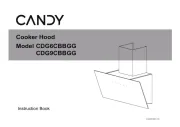
4 Juli 2025
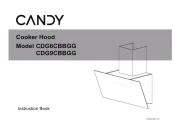
4 Juli 2025
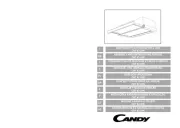
4 Juli 2025
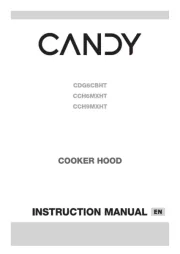
16 Juni 2025
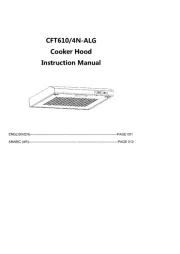
15 Juni 2025
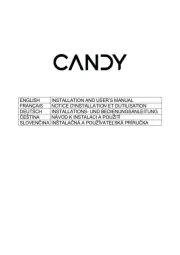
24 Maart 2025

31 Juli 2024

31 Juli 2024

30 Juli 2024

30 Juli 2024
Handleiding Afzuigkap
- Lynx
- Blaze
- Bestron
- Wave
- Fisher And Paykel
- Privileg
- Gorenje
- Berbel
- Progress
- Orbegozo
- Saturn
- Thomson
- Mercury
- Dacor
- Monogram
Nieuwste handleidingen voor Afzuigkap
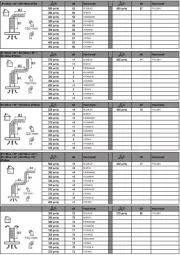
29 Juli 2025
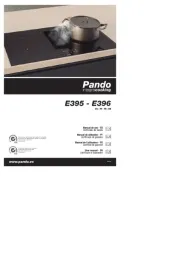
29 Juli 2025

29 Juli 2025
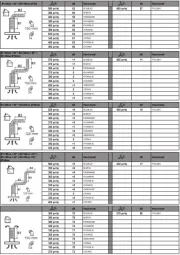
29 Juli 2025
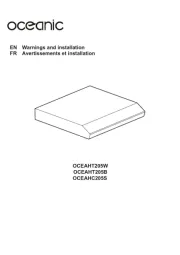
29 Juli 2025
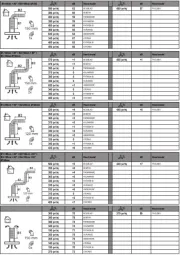
29 Juli 2025
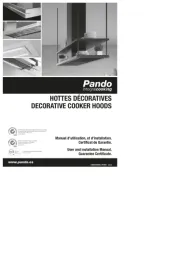
29 Juli 2025
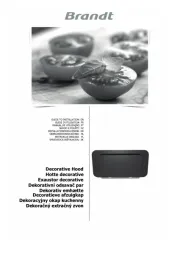
29 Juli 2025
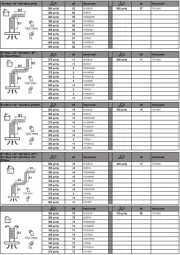
29 Juli 2025
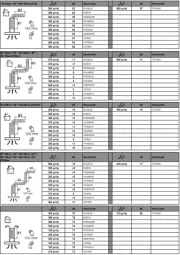
28 Juli 2025